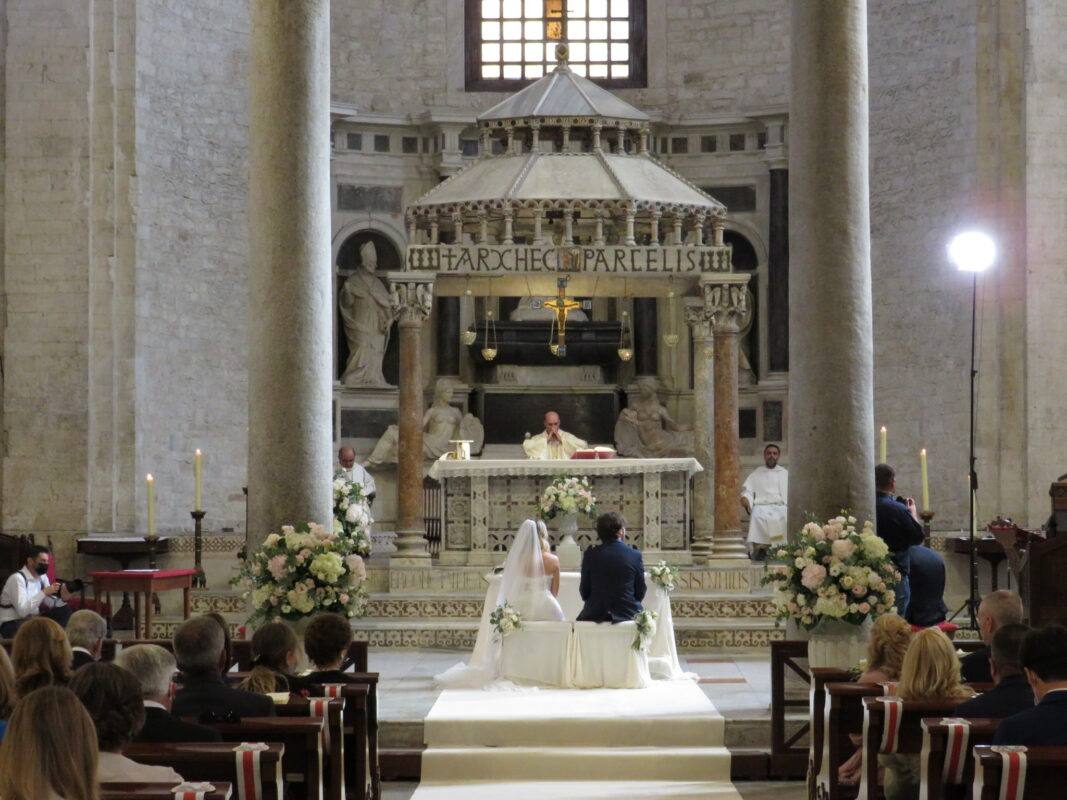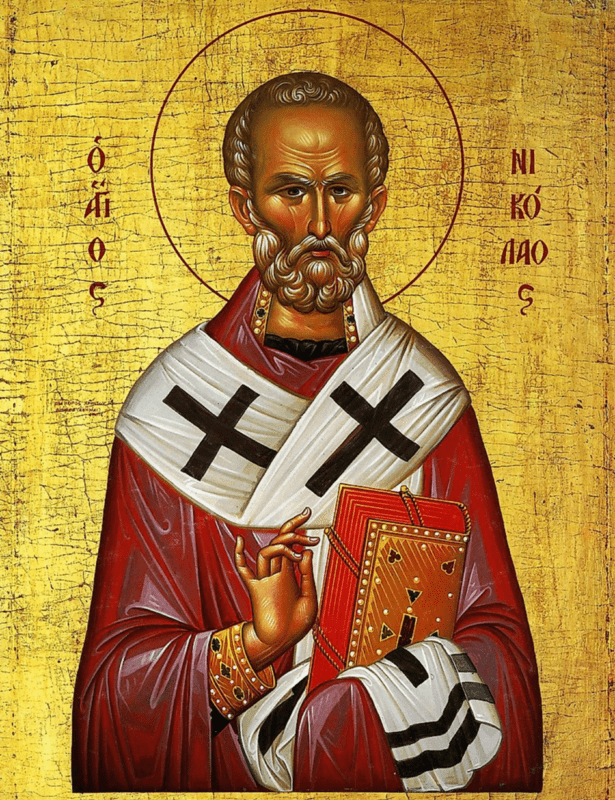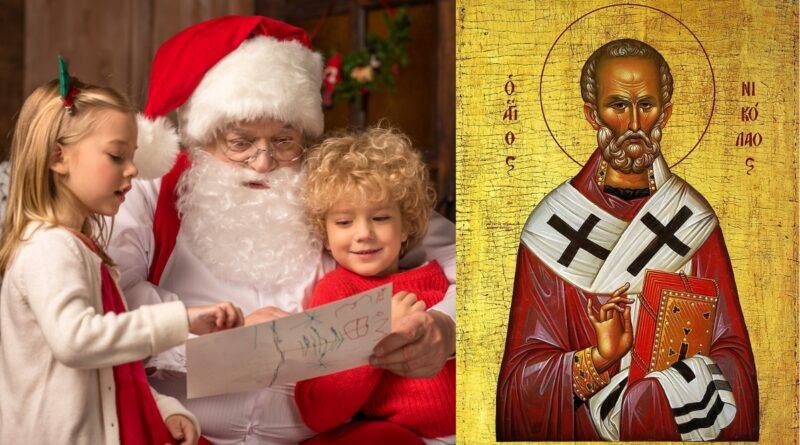St. Nicholas To Santa Claus: The Most Fascinating Guy
The transformation from St. Nicholas to Santa Claus is a fascinating journey through history and culture.
Santa Claus, Father Christmas, St. Nick—regardless of what you call him, the tale of this cheerful, round figure who brings gifts is familiar to all. Or perhaps they don’t?
Every child knows that Santa Claus hails from the North Pole. His historical journey is not just remarkable; it’s even longer and more fantastic than his annual, one-night circumnavigation of the globe.
The modern American Santa has a fascinating origin story that traces back to the Mediterranean during the Roman Empire. Over time, his legend transformed as it spread across northern Europe, eventually taking on his recognisable shape when he arrived on the shores of the New World. Have you ever wondered about the origins of Santa Claus? Let’s dive into the fascinating history of this beloved figure and explore how he has evolved throughout the years.
Jolly Old St. Nicholas!
On December 6, people around the globe come together to celebrate St. Nicholas Day, with the most vibrant festivities happening in various European cities. The portrayal of St. Nicholas has evolved over time, and it’s fascinating to see how different images emerge. However, none of these depictions resemble the familiar red-cheeked, white-bearded figure we commonly recognise today. Imagine uncovering the true visage of St. Nick, a figure who walked the earth in the third and fourth centuries. Surprisingly, this captivating image wasn’t crafted by the hands of ancient artists but rather brought to life through the innovative technique of modern forensic facial reconstruction.
The discussion surrounding the final resting place of the Greek bishop remains lively and ongoing. Traditionally, it has been thought that during the 11th century, Italian sailors made off with the bones of St. Nicholas, transporting them to the crypt of the Basilica di San Nicola located on Italy’s southeast coast. During the 1950s, the crypt underwent repairs, and this fascinating process included documenting the saint’s skull and bones through x-ray photography and meticulous measurements. For insights into alternative theories regarding the resting places of St. Nicholas, check out the article: “Could the Remains of Santa Claus Be in This Turkish Church?”
Caroline Wilkinson, a facial anthropologist at the University of Manchester in England, utilised these data along with modern software simulations to craft a contemporary reconstruction of the long-deceased individual. Wilkinson brought to life the human side of Santa’s original namesake, depicting a figure with a severely broken nose, likely a result of the persecution faced by Christians during the reign of Roman Emperor Diocletian.

Located in Bari, Italy, the Basilica of Saint Nicholas stands as a remarkable example of 11th-century architecture. It is widely thought that this place contains the mortal remains and sacred relics of St. Nicholas.
Her work invites a range of interpretations. To understand the size and shape of the facial muscles that once adorned Nicholas’s skull, researchers had to make educated guesses. They meticulously reconstructed the shape of the skull itself using two-dimensional data as their foundation. Digital artists infused their work with details drawn from educated guesses, portraying olive-toned skin typical of Greek Mediterraneans such as Nicholas, along with brown eyes and the grey hair characteristic of a man in his 60s.
“While we may have sacrificed some of the intricate details that photographs could provide, we truly believe this is the closest representation we will ever achieve of him,” Wilkinson shared in the BBC Two feature film about the project titled The Real Face of Santa.
Transitioning From A Bishop To A Gift Giver
Have you ever wondered how St. Nicholas transformed into the jolly figure we know today, residing at the North Pole and delivering Christmas gifts? It’s a fascinating journey through history and culture that shaped this beloved character. The original saint hailed from Greece and was born in the late third century, approximately in 280 A.D. He took on the role of bishop in Myra, a quaint Roman town located in what is now Turkey. Nicholas wasn’t your typical figure; he wasn’t fat or jolly. Instead, he carved out a name for himself as a fiery, wiry, and defiant defender of church doctrine during the tumultuous times of the Great Persecution in 303. This was an era marked by the burning of Bibles and the harrowing choice for priests to renounce their faith or face execution.
Nicholas boldly challenged these decrees, enduring years of imprisonment until the Roman emperor Constantine put an end to the persecution of Christians in 313 with the Edict of Milan. Nicholas’s legacy endures well beyond his passing on December 6 in the mid-fourth century, around 343. His association with numerous miracles has kept his memory alive, and the reverence for him persists even today, independent of any Christmas ties. He serves as a guardian for a diverse array of individuals, including orphans, sailors, and prisoners.
Saint Nicholas, who lived from 270 A.D. to 343 A.D., is a fascinating historical figure.

A captivating religious icon that beautifully depicts St. Nicholas.
Nicholas gained recognition among the saints due to his role as the patron for numerous groups. According to historian Gerry Bowler from the University of Manitoba, who penned the book Santa Claus: A Biography, by around the year 1200, he had gained a reputation as a beloved figure for children and a magical gift-giver, thanks to two remarkable tales from his life.
In this well-known story, three young girls find hope as they are rescued from a grim fate. The young Bishop Nicholas, in a remarkable act of kindness, discreetly provides three bags of gold to their struggling father, ensuring that the girls can have dowries and a brighter future.
“The other story may not be as familiar today, but it was incredibly popular during the Middle Ages,” Bowler remarked. Nicholas stepped into an inn, unaware that its keeper had just committed a heinous act, having taken the lives of three boys and preserved their dismembered bodies in barrels down in the basement. The bishop not only felt the weight of the crime but also brought the victims back to life. “This is one of the reasons he became known as the patron saint of children.”
From around 1200 to 1500, St. Nicholas reigned supreme as the ultimate gift-giver, becoming the star of festivities that revolved around his feast day on December 6. The strict saint embraced certain characteristics from earlier European deities, such as the Roman Saturn and the Norse Odin, both of whom were depicted as white-bearded figures with magical abilities, including the power of flight. He made sure that the kids stayed on track by encouraging them to say their prayers and practice good behaviour.

Imagine a whimsical scene from Christmas past, where Saint Nicholas and Father Christmas come together to spread joy and deliver presents to eager children. Picture an extraordinary illustration, a scrap picture that captures the essence of this festive spirit, hailing from Germany around 1910. It’s a delightful glimpse into a time when the magic of the season was celebrated with such charm and creativity.
However, following the onset of the Protestant Reformation in the 1500s, figures such as Nicholas lost their popularity in many parts of northern Europe. “That was quite an issue,” Bowler remarked. “You still have a deep love for your kids, but now the question arises: Who will be the one to bring them the gifts?”
Bowler mentioned that, in numerous instances, the responsibility shifted to baby Jesus, leading to the date being celebrated on Christmas instead of December 6. “However, the infant’s ability to carry is quite restricted, and he doesn’t come across as particularly intimidating,” Bowler remarked. “It’s interesting to note how the Christ child was frequently accompanied by a rather intimidating helper, tasked with carrying presents and keeping an eye on the kids in a way that feels a bit out of place for the baby Jesus.”
Among the chilling figures from Germanic folklore, we find characters inspired by Nicholas, who has transformed from a saintly figure into a more menacing companion. These include Ru-klaus, known as Rough Nicholas, Aschenklas, or Ashy Nicholas, and Pelznickel, often referred to as Furry Nicholas. The expectation of good behaviour often led to harsh consequences for children, such as whippings or even kidnappings. Though they may appear quite different from the cheerful figure in red, these vibrant characters would eventually play a significant role in shaping the legend of Santa Claus.
Arriving in the United States
In the Netherlands, children and families have wholeheartedly embraced St. Nicholas as the beloved gift-bringer, showing unwavering dedication to this cherished tradition. Sinterklaas made his way to the New World colonies, intertwining with the enduring legends of the shaggy and eerie Germanic gift-bringers that had captured imaginations for generations.
In the early days of America, Christmas was quite different from the holiday we know today. In New England, the holiday was largely overlooked, while in other regions, it had started to resemble the ancient pagan festival of Saturnalia that it had once replaced on the calendar. “According to Bowler, it was a lively event marked by outdoor festivities, plenty of drinks, and a spirited sense of community.” “This is how things had evolved in England too.” There wasn’t a specific, enchanting figure who brought gifts.
In the early decades of the 19th century, a transformation took place, driven by a group of poets and writers dedicated to reshaping Christmas into a cherished family celebration—reviving and reimagining the figure of St. Nicholas.
In 1809, Washington Irving introduced us to a whimsical version of Santa Claus in his book, Knickerbocker’s History of New York. This delightful tale featured a pipe-smoking Nicholas who soared above the rooftops in a flying waggon, bringing gifts to well-behaved children and switches to those who misbehaved.
Back in 1821, an anonymous illustrated poem called “The Children’s Friend” played a significant role in shaping the modern image of Santa and linking him to the Christmas season. “At last, we get to see the arrival of a Santa Claus,” Bowler remarked. “It seems that the enchanting tradition of St. Nicholas has been transformed over time. The essence of his religious roots has been removed, and now we see Santa adorned in the luxurious furs reminiscent of those ancient Germanic gift givers.”
That figure brought gifts to good girls and boys, but he also carried a birch rod, as the poem pointed out, that “guides a parent’s hand to use when virtue’s path his sons refuse.” Santa’s slender waggon was drawn by just one reindeer, but both the driver and the team were set for a significant transformation in the coming year.
Back in 1822, Clement Clarke Moore penned a delightful poem titled “A Visit From St. Nicholas,” which many of us now recognise as “The Night Before Christmas.” He crafted this charming piece for his six children, never dreaming it would contribute to the growing legend of Santa Claus. The following year, it made its debut without an author’s name attached, and even now, the cheerful, rotund Santa depicted in those pages continues to soar through the skies in a sleigh pulled by eight well-known reindeer.
“It really took off,” Bowler said. Even though the poem is well-known, it still sparks the imagination. Throughout the 19th century, Santa was depicted in an array of colourful outfits, ranging from tiny to enormous, and took on many different forms. “I have this amazing picture of him that totally resembles George Washington riding a broomstick,” Bowler shared.
It was only in the late 19th century that the iconic image of Santa took shape as a full-sized adult, clad in red with white fur trim. This jolly figure emerged from the North Pole, riding in a sleigh pulled by reindeer, all while keeping a watchful eye on the behaviour of children everywhere.
The cheerful, round, grandfatherly visage of this Santa was primarily shaped by Thomas Nast, the renowned political cartoonist from a time rich with many such figures. “Yet, Nast did leave him with a half-sized figure,” Bowler remarked, “and I must say, the long johns he chose are quite indecent in my opinion.”

Take a trip back to the 1880s with this charming illustration of Merry Old Santa Claus by the talented Thomas Nast. Captured beautifully, this artwork from North Wind Picture Archives/Alamy brings the spirit of the season to life.
After becoming well-established, Santa in North America made a fascinating journey back to Europe, where he took the place of the more frightening gift givers and embraced local names such as Père Noël in France and Father Christmas in Great Britain. “What he’s accomplished is essentially to soften these characters reminiscent of Grimm’s Fairy Tales from the late mediaeval period,” Bowler remarked.
The Santa dilemma
While he certainly has good intentions, Santa has undeniably sparked and continues to generate quite a bit of controversy.
In Russia, Santa Claus found himself at odds with Josef Stalin. Prior to the Russian Revolution, Grandfather Frost, known as Ded Moroz, emerged as a beloved Christmas figure, embodying traits reminiscent of early Santa Claus figures such as the Dutch Sinterklaas. “According to Bowler, the establishment of the Soviet Union led to the communists putting an end to the celebration of Christmas and the tradition of gift-bringers.”
“In the 1930s, as Stalin sought to garner support, he permitted the return of Grandfather Frost, transforming him from a Christmas gift bringer into a New Year’s gift bringer,” Bowler noted. The efforts to replace Christmas in Russia didn’t quite pan out, much like the Soviet attempts to introduce a secular version of Grandfather Frost, who donned a blue coat to steer clear of any Santa mix-ups, across Europe.
“After World War II, the Soviets made it a point to replace the traditional gift-bringers in countries such as Poland and Bulgaria,” Bowler explained. “Local people endured the situation, holding their noses until the Soviet Union finally collapsed in 1989, allowing them to return to their own cherished traditions.”
Santa continues to be a figure of political debate across the globe. In the years right after World War II, American troops took it upon themselves to share their unique interpretation of the jolly man across the globe. According to Bowler, this figure was largely embraced as a representation of American generosity, especially in the context of helping to rebuild countries that had been devastated by the war.
In today’s world, it seems that Santa has found himself on the naughty list in various countries. This shift often stems from the perception that he embodies the secular aspects of Christmas, overshadowing the holiday’s religious significance. There are times when Santa faces rejection simply because he doesn’t hail from the area. “In regions such as the Czech Republic, the Netherlands, Austria, and Latin America, there exists a notable resistance to the figure of Santa Claus. This movement aims to safeguard their traditional Christmas gift-bringers and customs, ensuring they remain distinct from the North American version of Santa,” he explained.
It appears that these efforts might not dampen the increasing fascination with Santa Claus. However, the organisers could potentially lighten his load a bit on that hectic Christmas Eve journey.




